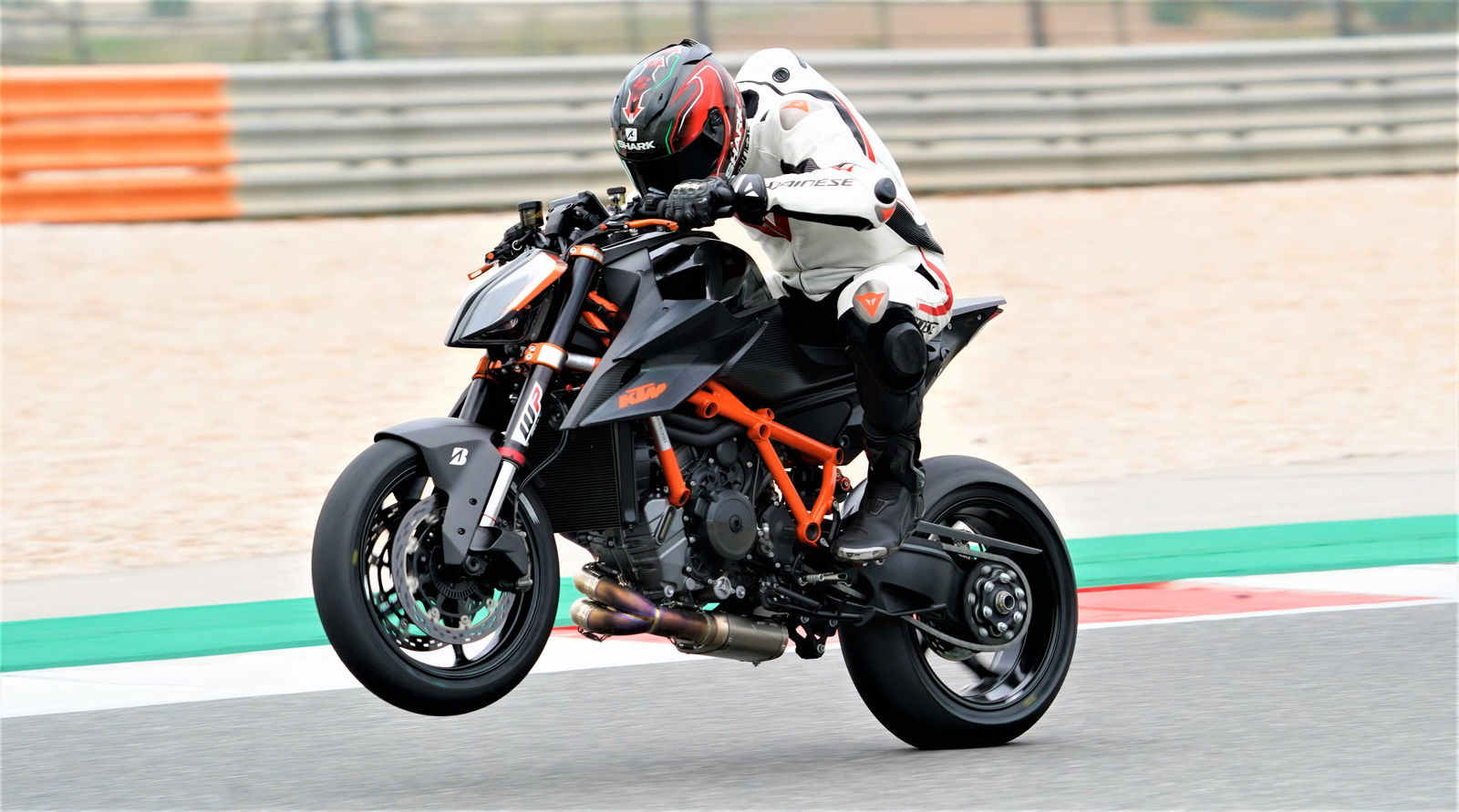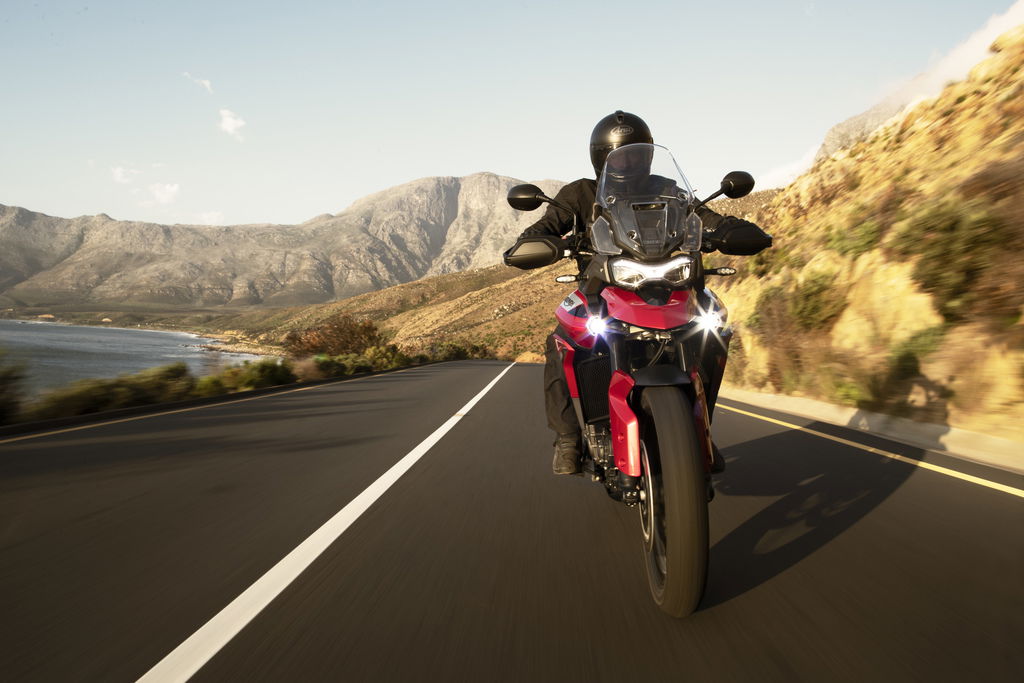Kawasaki Ninja 1000 SX (2020) Review
Visordown experiences the joy of SX as we check out the Kawasaki Ninja 1000 SX at the press riding launch in Cordoba, Spain
.jpg?width=1600&aspect_ratio=16:9)
THE renamed for this year Kawasaki Ninja 1000 SX see’s the top-flight (and best-selling here in the UK) sports touring machine get a host of upgrades for the 2020 season. The new machine now wears revised and sleeker body work, a new TFT dash with riding modes within it, a new exhaust and of course, the obligatory Euro5 compliant engine too.
Kawasaki Ninja 1000 SX first impressions
The most notable change, for most people, is the name through. The idea behind dropping the Z1000 SX moniker in favour of the Ninja is that it brings in line all of Kawasaki faired motorcycle range, right from the CBT friendly Ninja 125, to the range-topping Ninja H2 and H2R.
The press launch for this bike was set in Cordoba, central Spain. It was a prefect mix of fast sweepers, tight and technical mountain switchbacks and also some time spent on the motorway and dual carriageway. As tests of a sports touring bike go, the two days we spent riding the new machine ticked every box. Here’s what we found out.

Kawasaki Ninja 1000 SX price and colours
There are three colours available for the new bike, the metallic black and grey as ridden which is £11,199, and Kawasaki Green and Pearl White options which come in at £10,999. You can pick up a PCP deal on the new bike for around £150 p/m and the bike is in dealers in the next few weeks.
There are two options you can select to be fitted at the dealer too, the Performance and Touring packs. You can opt for either pack or go for both together.
Performance Edition:
- Tank pad
- Smoked screen
- Frame sliders
- Colour coded seat cowl
- Akrapovic end can
Tourer Edition:
- Tank pad
- Large screen
- 28l colour coded panniers
- pannier inner bags
- GPS bracket
- TFT screen protector
- Heated grips
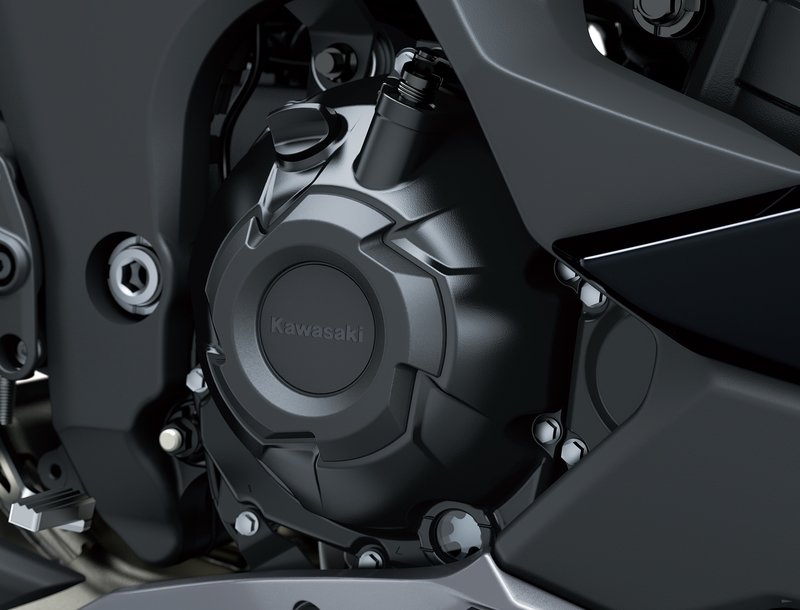
Engine and gearbox
Nestled beneath the sleek looking new bodywork of the Ninja 1000 SX is a 1034cc, four-cylinder, DOHC inline engine. It’s been around for some time now, tracing its routes back as far as the 2003 and the first modern take on the Z1000. During that time, it’s gone through minor tweaks and changes, mostly to keep compliancy and to be honest, it doesn’t really need big updates as it’s such a satisfying unit to use.
It’s got masses of low-down grunt with 80 ft-lbs on offer peaking at 7,500rpm. You seem to have the same amount of shove from tickover as you do in the sweet spot, with the bike easily pulling away from lights in 3rd gear. Once the need to some instantaneous shove has passed and it’s time to get the hammer down, the 140bhp the engine has is enough to push the bike above the 150mph mark with very little fuss at all.
.jpg?width=1600)
A new item for this year is the up and down shifter and blipper that helps you to skip gears through the six-speed ‘box. It’s perfectly deft once on the move although as with most quickshifters, it comes into its own higher up the rev-counter, changing more clumsily below 4,500rpm.
Mated to the gearbox is an updated assist and slipper clutch, running fewer clutch springs than the old model. The result is a clutch lever that is two-finger-light and extremely easy to use. Great news if you have big miles planned for this season.
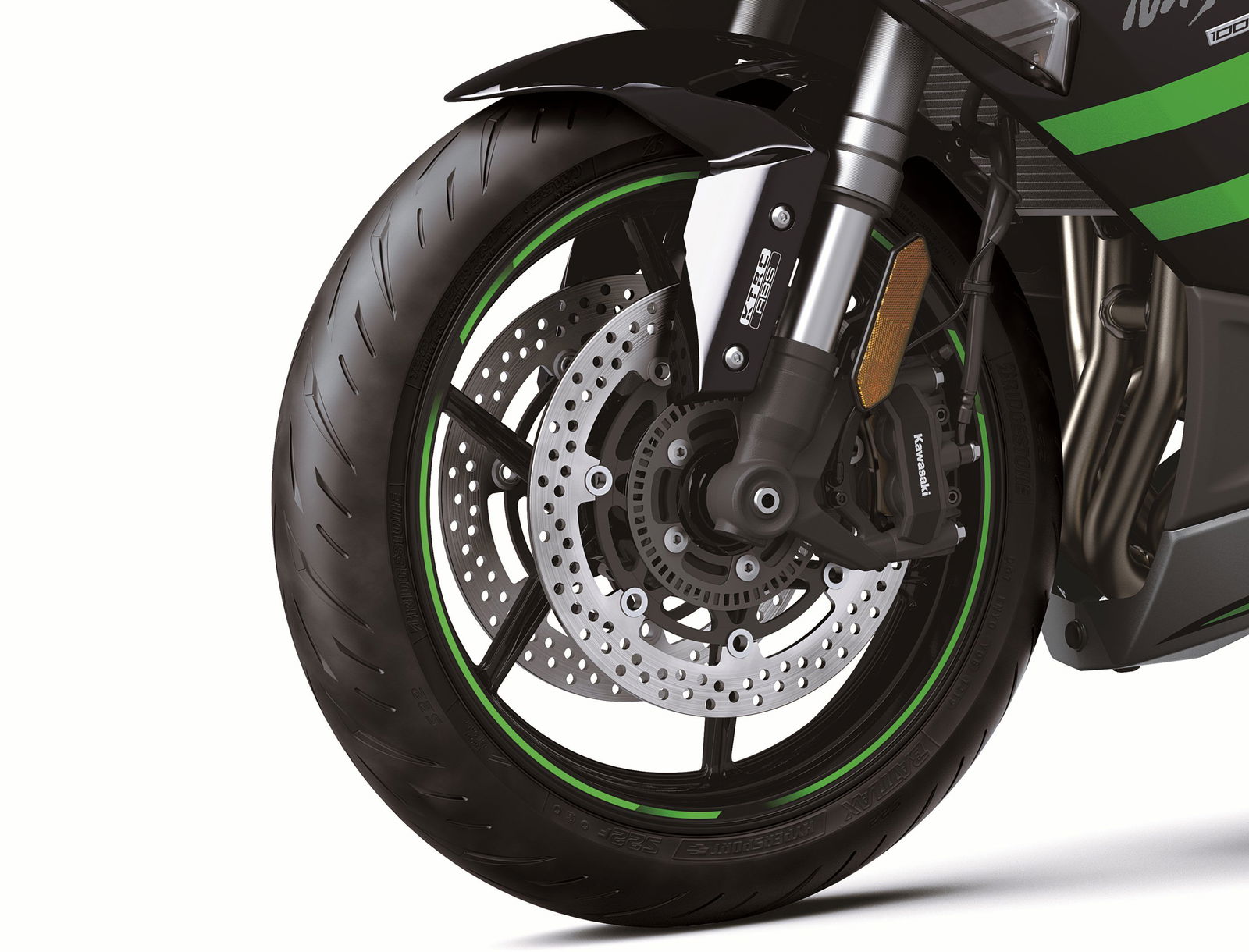
Suspension
41mm forks take care of the front end with rebound damping adjustability only. The rear shock is a horizontal back-link item, with a remote preload adjuster and rebound damping adjustability. On stock settings the suspension is extremely good, giving the bike a sure-footed feeling in that it’s quick to turn but perfectly stable at any speed.
A new bypass valve in the fork allows the front end to react better to small bumps and undulations at low speeds, something that became instantly noticeable when riding through some of the cobbled roads in Spain’s rural southwest. It’s a minor update but really smooths out those jarring bumps that can make a long ride tiring for both rider and passenger.
.JPG?width=1600)
Handling
As with any sports tourer, high-speed stability is what you want, and the new Ninja is extremely stable. With panniers fitted on the launch and the speeds creeping above 100mph I encountered no wobbles weaves or issues at all.
On some of the more open and sweeping sections of the press ride, the wide, high-set bars come into their own and allow you to counter-steer the bike with precision. It’s a satisfying feeling to be able to waft a 232kg bike doing over motorway speeds with just a few grams of pressure on one of the handlebars!
.jpg?width=1600)
Standard fitment on the new Ninja is Bridgestone S22 f tyres, built especially by Mr Bridgestone to Kawasaki’s exacting specification. The focus is on more grip, both wet and dry, and increased agility. With a common theme of recent launches being to bash the tyres, it was refreshing to come back from Cordoba with a new-found faith in the tyre manufacturing industry. Bridgestone has done a decent job with the new hoops. They heat up nice and quick, give plenty of grip and give the bike a silky-smooth demeanor out on the road. They’re a dual compound tyre too, which the man from Bridgestone assured me meant they’d outlast the old S22’s.
With all this edge grip on tap, knee-down riding is firmly on the cards should you want to, with scuffed sliders on the launch being the order of the day. It stuck with me that part of this bike’s appeal, for me anyway, is its do it all character that’ll see you riding on track one day and drifting down the autoroute with my missus and luggage the next.
_0.JPG?width=1600)
Brakes
Another new feature for this year is the IMU controlled ABS braking system, with Nissin and Tokico joining forces to supply the hardware. They might not be the flashiest looking bits of kit out there, but they’ve got loads of bite, a nice feel through the adjustable lever and a cornering ABS system that just works. The back brake too is a quality feeling item, helping out with low-speed control via a positively set up and well-placed lever.
The ABS on the bike isn’t switchable, something to do with Euro regulations, and you can’t select lower levels of activation either – through riding mode changes or manually – although I rarely felt the system intervening, helped in part the decent rubber and low-flying geometry of the thing.
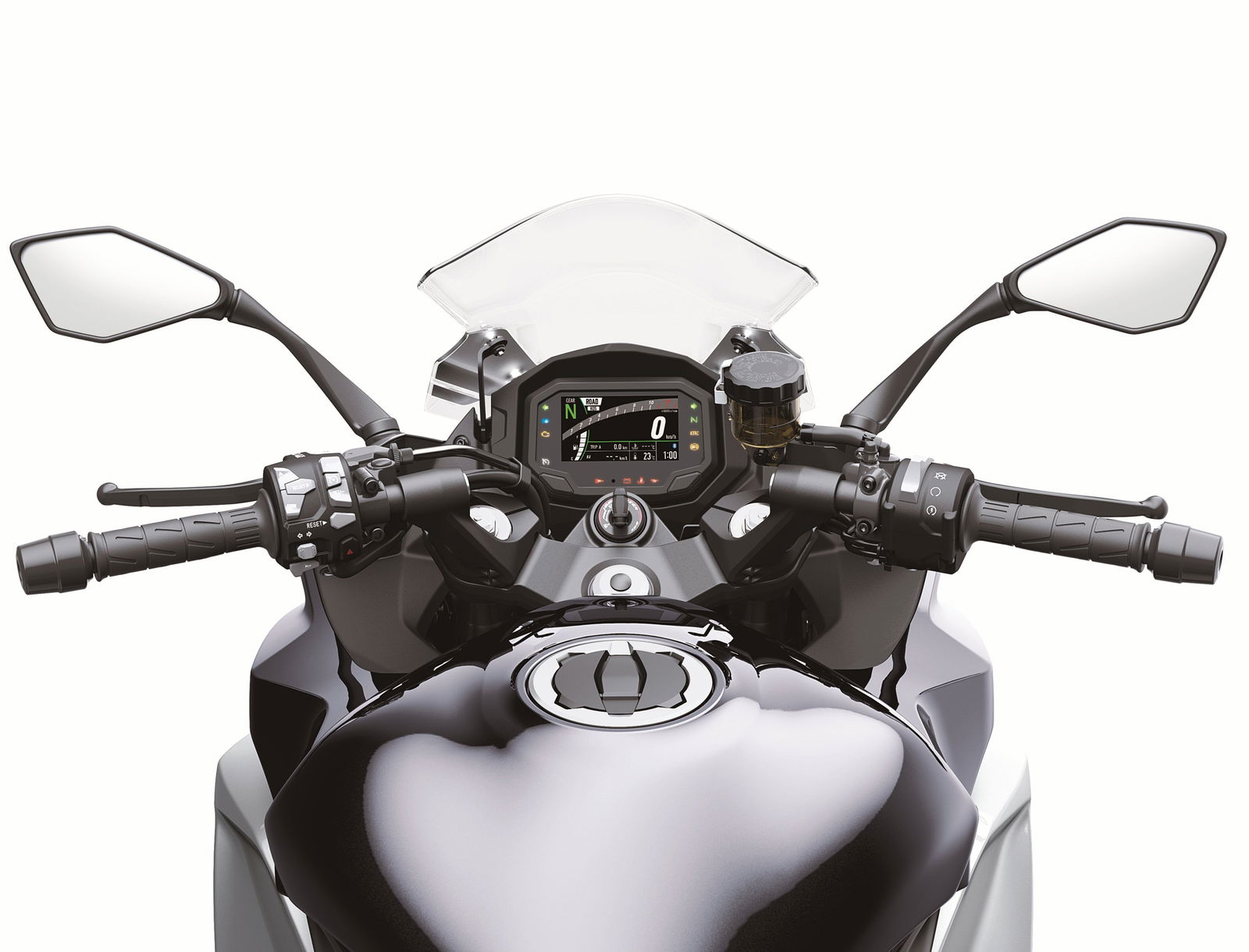
Comfort
Like the CEO of a company giving a rousing sermon to their workers, the keynote speech of the Ninja is its long-distance comfort. Having a sports tourer that is anything other than perfect in this department is bad news indeed and its good news for Kawasaki. With its long and low aesthetic, the Kawasaki Ninja 1000 SX is a bike that you sit in, rather than on. With the deeply sculpted fuel tank sides wrapping around you like a 1043cc hug.
.JPG?width=1600)
At 5’7” I’m about at the lower height limit for the bike in stock trim, with the large, flat profile of the seat creating a wide stand-over. For riders of my height or less it’ll force them to opt for the lowered seat which transforms the machine despite only dropping the seat height by 20mm or so. Seat to peg distance was spot on for me, with the lower-body ergonomics keeping my legs nicely bent and tucked in behind the chunky fairing. The high-set bars seem to sprout out of the forks and force you into a neutrally comfortable and slightly forward-leaning stance, sharing your body weight across your backside and your shoulders.
Another update for this year is a new, plusher seat for both rider and passenger. It’s a very soft yet supportive design and is probably in line for some credit regarding the above-mentioned comfort.
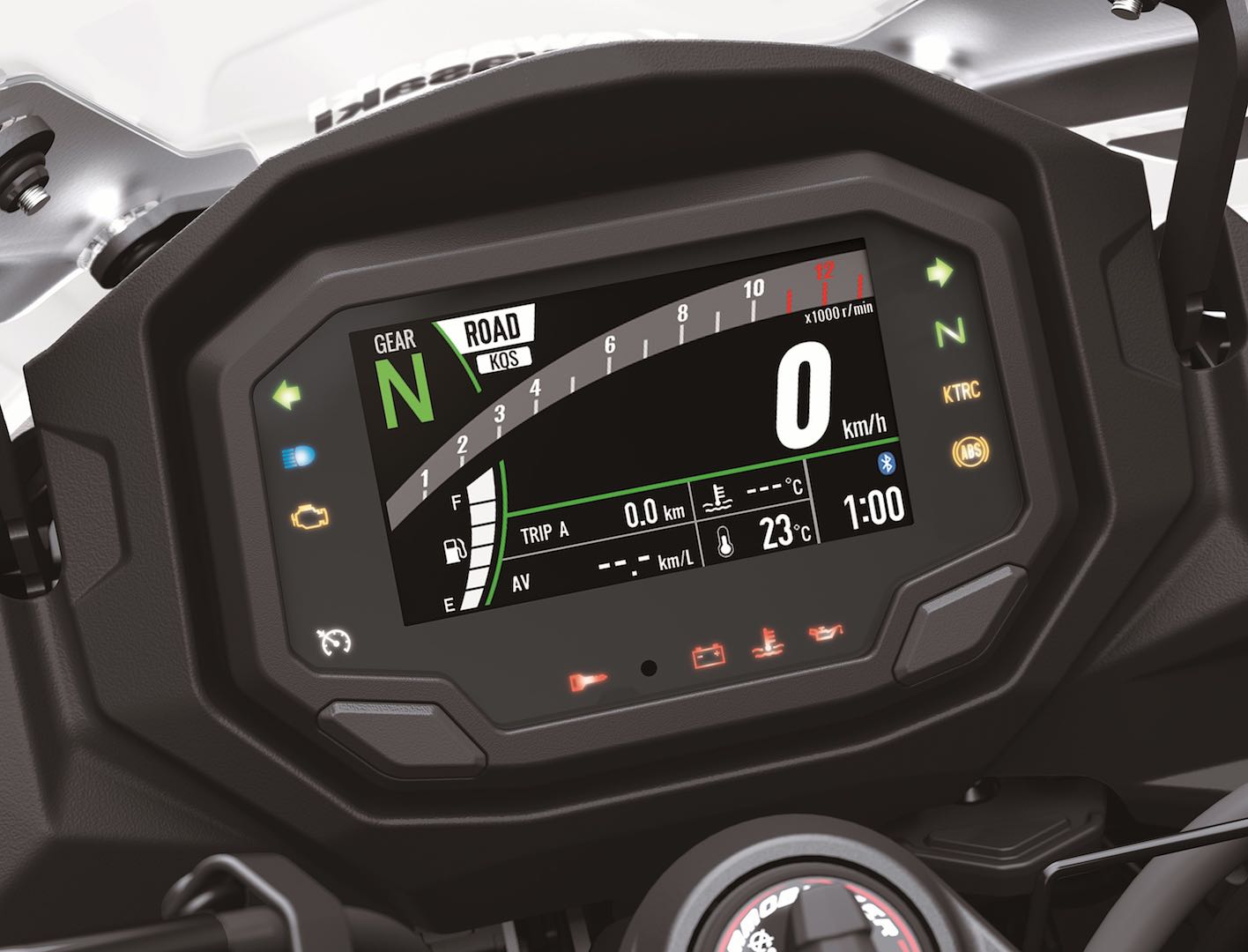
Equipment
As with many of Kawasaki’s mid and large capacity machines, the Ninja 1000 SX gains a new TFT dash for 2020. If you’ve read or seen the video reviews on Visordown for the Z900 and Z650 you’ll already know how much of a fan I am of this bit of kit. The dash is simply laid out and a doddle to read regardless of lighting conditions.
Within the dash is a new set of riding modes, Road, Rain, Sport and Rider, with Rider being a user-configurable set up where you can stipulate to have things like the traction control turned off for some wheelie good fun!
As with any new TFT system it might take a few days to get used to changing the modes, but it can all be done on the fly and once you have got into the swing of it.
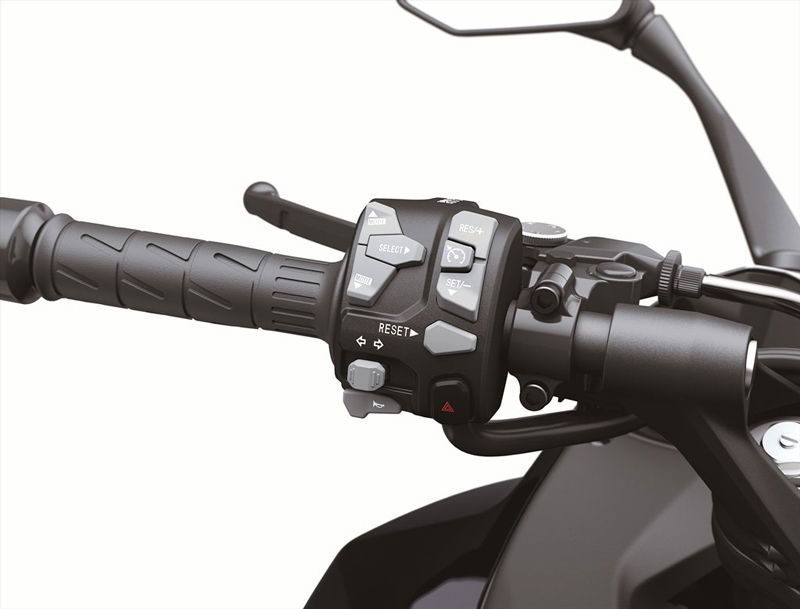
With the new modes and TFT comes the inclusion of the Kawasaki Rideology app, that can track your route, speed, average speed, fuel level and lean angle on the IMU-equipped Ninja 1000 SX. The app itself is very easy to use, although locking my phone screen did cause it to stop tracking my route meaning you’ll need the optional USB if you want to track longer rides.
The 2020 Ninja 1000 SX is equipped with cruise control which is new for this year. It’s all controlled and armed through the left-hand switch cube and can be deactivated by closing the throttle right to the throttle stop. It’s not a method of deactivating cruise control I’ve seen before and feels very intuitive and natural when out on the road.
.JPG?width=1600)
We Like
- Adventure bike comfort in a sporty package
- Silky-smooth in everything it does
- A do it all package that really ticks a lot of boxes
We don’t like
- A USB as standard would be nice
_0.JPG?width=1600)
Kawasaki Ninja 1000 SX Verdict
The phrase ‘a do-it-all motorcycle’ is one that manufacturers have been banding around for years and it’s very rarely true. The problem is that the nature of motorcycles and their riders means that what works for one may not work for another.
For me, and the type of riding I do, the Ninja 1000 SX would be almost all the motorcycle I’d ever need, with comfort for my commute, space for the odd two-up tour and more than enough poke to go and have a play on track a few times a year. The fact that the new bike has even more tech, comfort and aftermarket options than before makes it an even more appealing machine for those with big miles to cover.
For more information on the new Kawasaki Ninja 1000 SX, head to: www.kawasaki.co.uk
.JPG?width=1600)
Kawasaki Ninja 1000 SX specs
ENGINE | |
Type | Inline-4 |
Bore x stroke | 77.0 x 56.0mm |
Displacement | 1043cc |
Maximum torque | 81.7 ft/lbs @ 7800 rpm |
Compression Ratio | 11.8;1 |
Valvetrain | DOHC, 16 valves |
Cooling | Liquid |
Fuel management | DFI w/ four Keihin 38mm throttle bodies |
Ignition | TCBI w/ Digital Advance |
Transmission | 6-speed |
Final drive | Sealed chain |
CHASSIS | |
Front suspension | Fully adjustable inverted 41mm cartridge fork; 4.7 inches of travel |
Rear suspension | Spring-preload and rebound-damping adjustable horizontally mounted linkage assisted shock; 5.4 inches of travel |
Front tire | 120/70 ZR17; Bridgestone Battlax Hypersport S22 |
Rear tire | 190/50 ZR17; Bridgestone Battlax Hypersport S22 |
Front brake | 300mm semi-floating petal discs w/ radially mounted monobloc calipers and radial pump |
Rear brake | 250mm petal disc, ABS |
ABS | Standard |
DIMENSIONS | |
Wheelbase | 1,440mm |
Rake | 24.5 degrees |
Trail | 4.0 inches |
Seat height | 835mm |
Fuel capacity | 18 litres |
Curb weight | 235kg |
